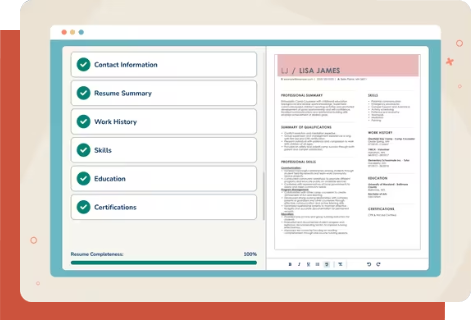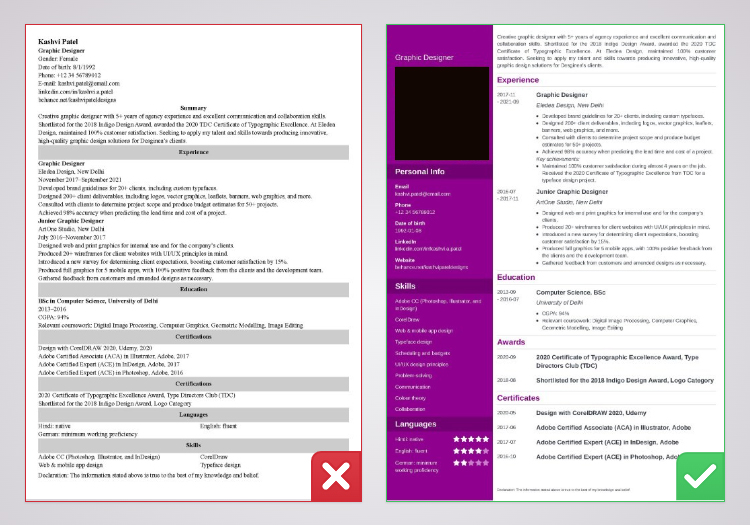Writing a compelling resume increases your chances of getting called back for an interview. But what
makes a good resume? Keep reading!
We’ve broken down how to create a resume step-by-step and provided examples of how to write a resume
for popular jobs and special circumstances.


Preparation is key to writing a resume that stands out. We’ll cover what essential information you should gather before writing your resume to save time and put your best foot forward. To ensure a well-prepared resume, carefully examine your relevant qualifications and match them with the requirements of your desired job. Take the time to organize a comprehensive list that includes:
Now that you’ve prepared your information, it’s time to choose a resume format that effectively showcases your qualifications. There are three standard formats. Each uses the same resume sections but organizes them differently, so choose one that works best for your work experience level and your professional goals.
One of the most important aspects of writing a resume is ensuring that your contact information is clearly displayed so that hiring managers can reach out to schedule an interview. Check out the resume header examples below to learn what contact information to include, where to place it and how to format it for maximum impact.
A resume summary is a concise and impactful overview of a candidate’s qualifications, skills and career goals. Murray emphasizes that a resume summary should “hook the reader and entice them to explore your resume further,” avoiding generic clichés while highlighting what sets you apart from other applicants.
Potential employers want to know what they can gain by hiring you, so they will review your resume work history section to see how you have used your skills and knowledge to make an impact on current and previous employers. For each job, display three to five work accomplishments in bullet points and quantify them when possible. A 2018 survey conducted on behalf of CareerBuilder found that 34% of hiring managers identified a lack of quantifiable results in a resume as an instant deal breaker.
When writing a resume, you must include at least one bulleted list of skills, no matter what resume format you use. Include a mix of hard and soft skills to show recruiters you are well-rounded. When thinking about what to put on a resume skills section, aim for an average of six to eight of your top strengths, as long as they are relevant to the job you want. If you are changing careers or applying for your first job without work experience, focus on transferable skills like communication and critical thinking, which can apply to almost any job.
An important step in learning how to write a good resume for a job is learning how to list your education credentials. Here’s what goes on a resume education section
Some jobs, like nursing, accounting and teaching, require candidates to have certifications and licenses. Some job seekers go the extra mile and get additional training or certificates to establish their expertise in their chosen fields. When making a resume, create a separate resume section for certifications, licenses or professional training you have completed. Here’s how to make a good resume certifications section for any additional training.
How do you make a strong resume? Effective resume writing is more than just making sure you have all the basics. Add optional sections, like volunteer work, awards, honors and publications. If you have published work or have received relevant awards that will help you further highlight your accomplishments, then you should include them — they won’t hurt your chances but help you stand out. Only create a separate section for awards, honors, publications or volunteer work if you cannot tie them into other sections of your resume.
Typos and grammatical errors are the most common resume-writing mistakes — and a deal-breaker for about 80% of hiring managers. When making a resume, reread it thoroughly to ensure that you’ve written everything perfectly and that all your dates and company names are correct.